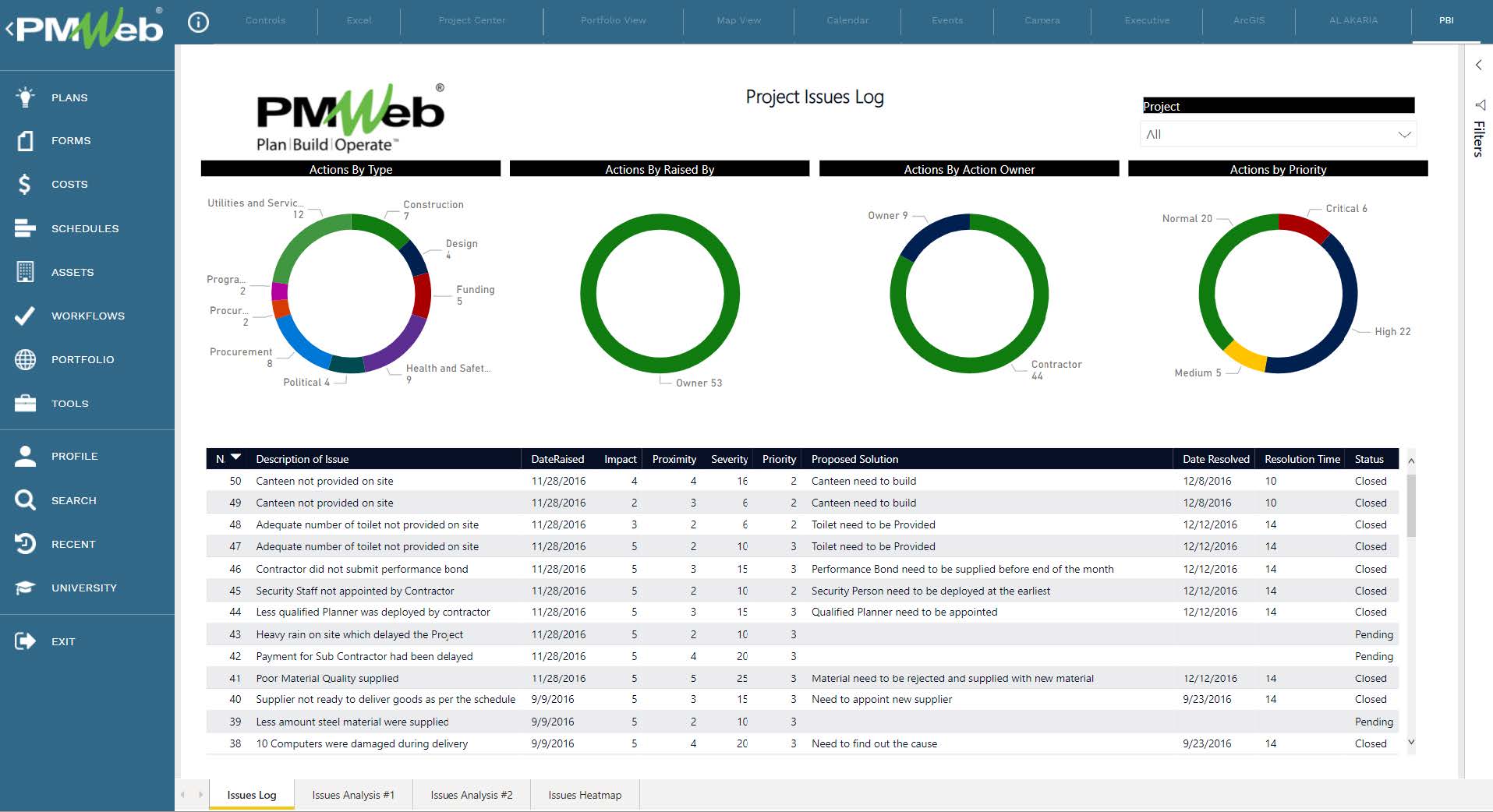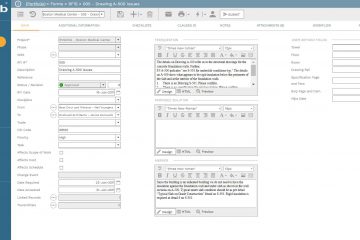Similar to all other capital construction projects, the execution of Public-Private-Partnership (PPP) projects has many risks. The risks involved in PPP projects are of several types. They include planning risks, design risks, construction risks, operating risks, market and revenue risks, legal risks, financial risks, political risks, environmental risks, and force majeure risks.
For example, the planning risks are those risks associated with the conducted pre-development studies (technical, legal, financial, and others) if they were inadequate or not robust enough resulting in possible deviations from the outcomes that were planned or expected in the PPP project development. Other planning risks include the no response to the request for proposal (RFP) and no credible bids, among others.
The design risks are the risks related to any mistakes or defects in the design specifications or in the design of structural elements which makes the project unable to meet the performance and service requirements in the output specification. On the other hand, construction risks in PPP projects include the risks of inefficient working, delay in agreement approvals by the public sector, modifications in design, delayed approvals, and contractor failure to perform, among others. Further, the operating risks are the risks related to the operations and maintenance costs of the infrastructure of the project which could include the technology used in the design becoming out of date when the project goes into operation.
The market and revenue risks are the risks resulting from the PPP project being unable to receive the revenue that it would require from operating the assets. On the other hand, legal risk could occur due to many reasons including delays, land acquisition, ownership assents, breach of documents, financial failure of the private sector, and corporate and security structures.
The financial risks are those risks associated with the non-availability of sufficient finance for the project at reasonable cost and exchange rates escalation, while political risks could include nationalization of the project, tax increment, payment failure by the public sector, delay in approvals from public authority, termination of the private sector by public sector among others. Force majeure risks are risks that cannot be controlled and prevented by any of the parties of the project. The general force majeure risks are due to natural force majeure events or natural forces including natural disasters such as floods, earthquakes, cyclones, etc. For PPP projects where a Project Information Management System (PMIS) like PMWeb is used to digitalize the many processes needed to manage those projects as well as manage the deliverables at each life cycle stage, a risk management module will always be available to capture details of the identified risks. The quality of the risk register depends on the extent of risks identified under each PPP project life cycle stage and risk category as detailed above. For example, those could include the stages of Identify & Screen, Appraise & Prepare, Structure & Draft, Procurement, and Operation & Hand Back.

It is highly recommended that risks are well-defined to avoid any confusion. For example, it should be in the format “As a result of (definite cause), (uncertain event) may occur, which would lead to (effect on objective or objectives)”. Causes use present tense phrases such as “is, do, has, has not, are, etc.”, risks are described with words like “may, might, could, possibly” while effect uses conditional future tense “will, would, could, etc.”
Another good practice is to use a detailed risk breakdown structure (RBS) for grouping the project risks that organize and define the total risk exposure of the project. The RBS can be used as a risk identification aid – where it can be used as a prompt list to identify risks, risk assessment – which can be used to categorize risks by their source, comparison of projects, risk reporting and roll-up of risks, and lessons learned.
The information captured in this risk register includes the risk name, risk type, responsibility, impact category, occurrence likelihood value %, impact value %, activity duration, and project schedule activity. This information provides the risk score and schedule impact, which enables the project team to identify the risk response action to be taken to treat the risk. The register also captures the residual cost impact, also known as “Cost,” and the expected value of each identified risk, also known as “Risk Cost.” The risk register also includes the project stage the risk is associated with, selected risk response, risk strategy, associated project schedule activity, and others.
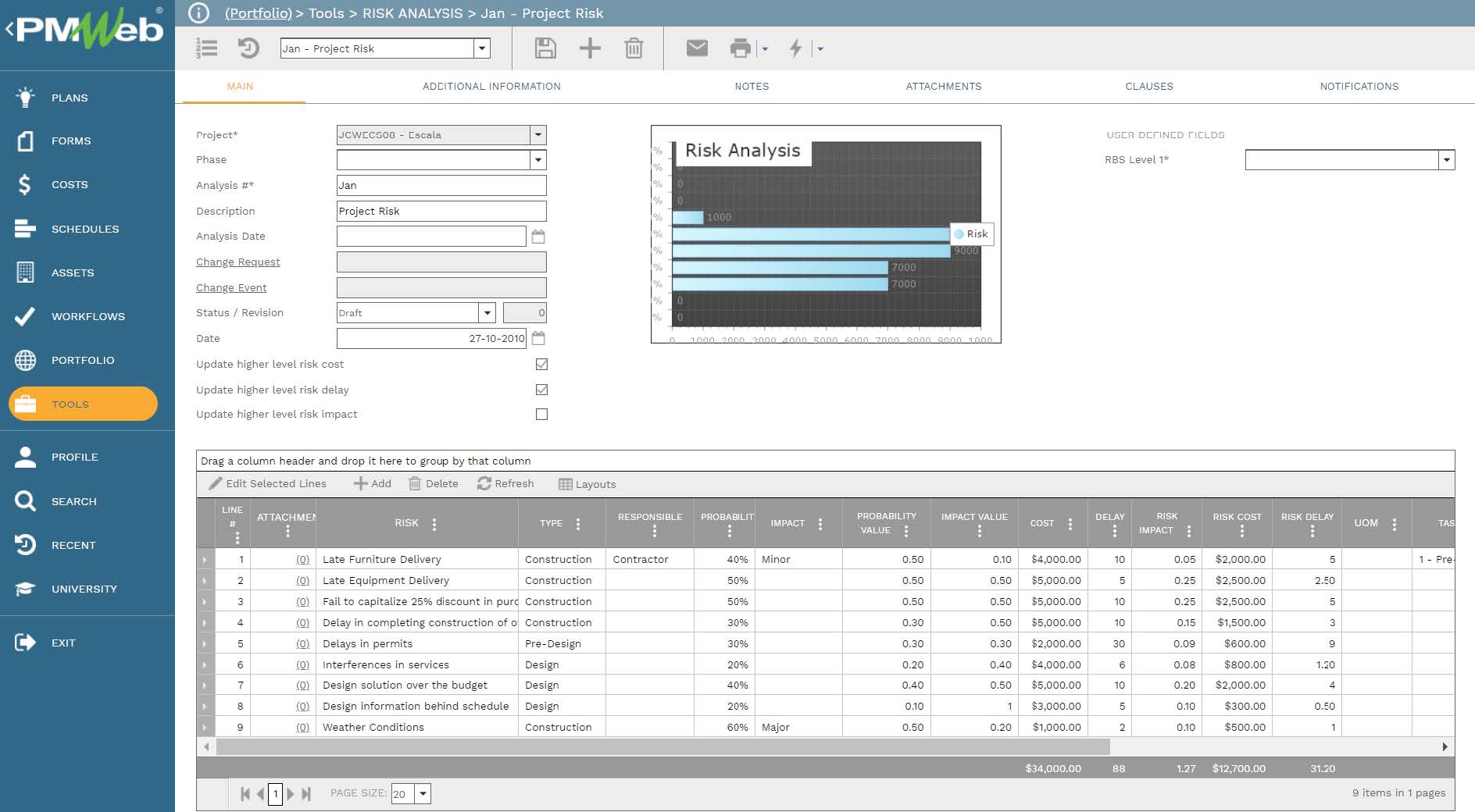
The data captured in the risk analysis helps to create and share the risk register report. The report includes the details of pre-mitigation and post-mitigation likelihood and the impact and exposure of each risk. The risk can be designed to group risks by project stage, risk category, and response strategy used to treat these risks.
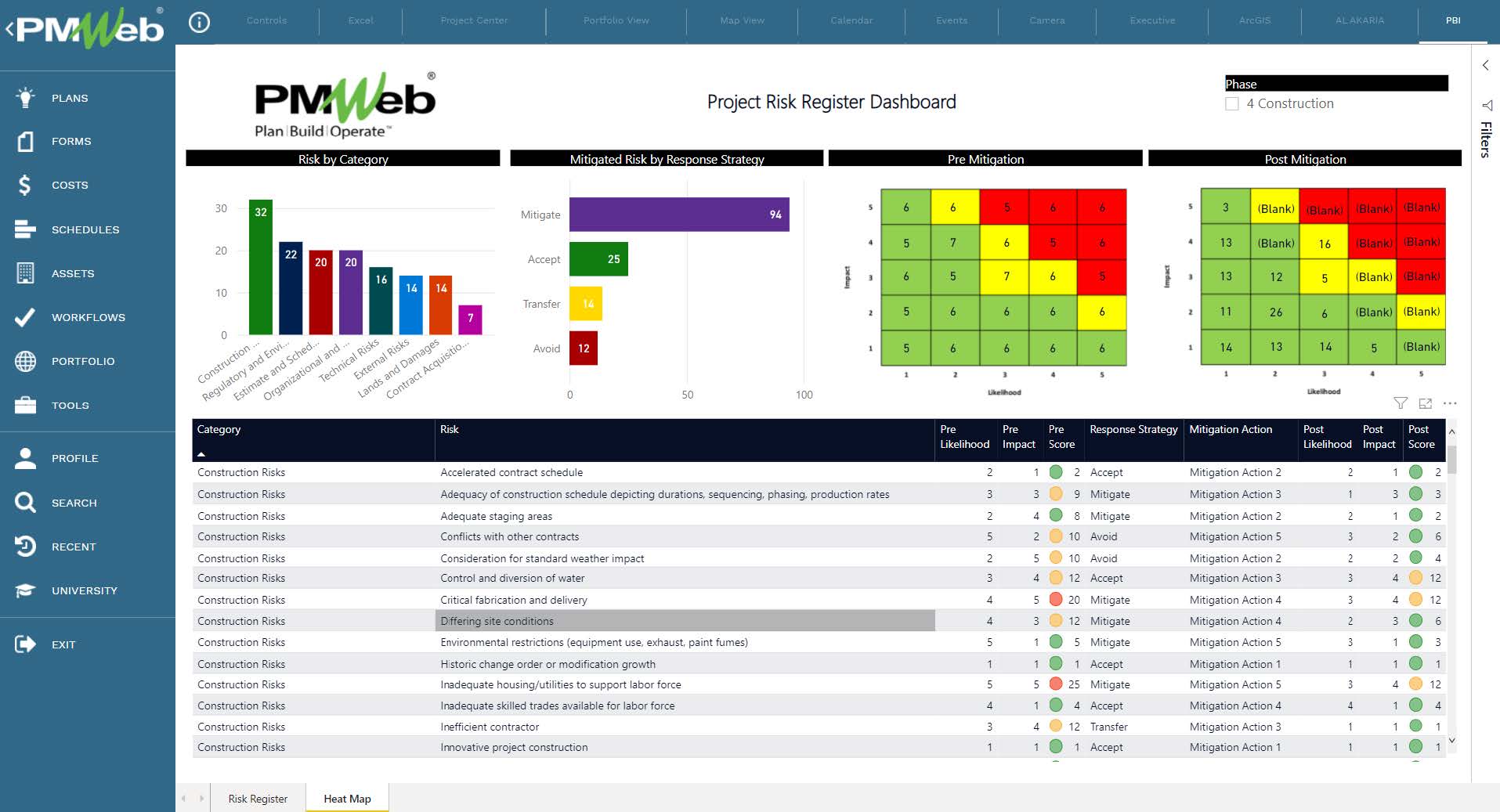
The risk register table displays the pre-mitigation and post-mitigation assessment of each risk occurrence likelihood, impact, and score, as well as the cost of the residual risk and expected risk value. In addition, the calculated expected exposure value of each residual risk can be reported. This estimated risk exposure becomes the basis for setting the contingency reserve value in the project budget. The report may be designed to include visuals that summarize the expected contingency reserve value by risk category, project stage, and selected risk response strategy.
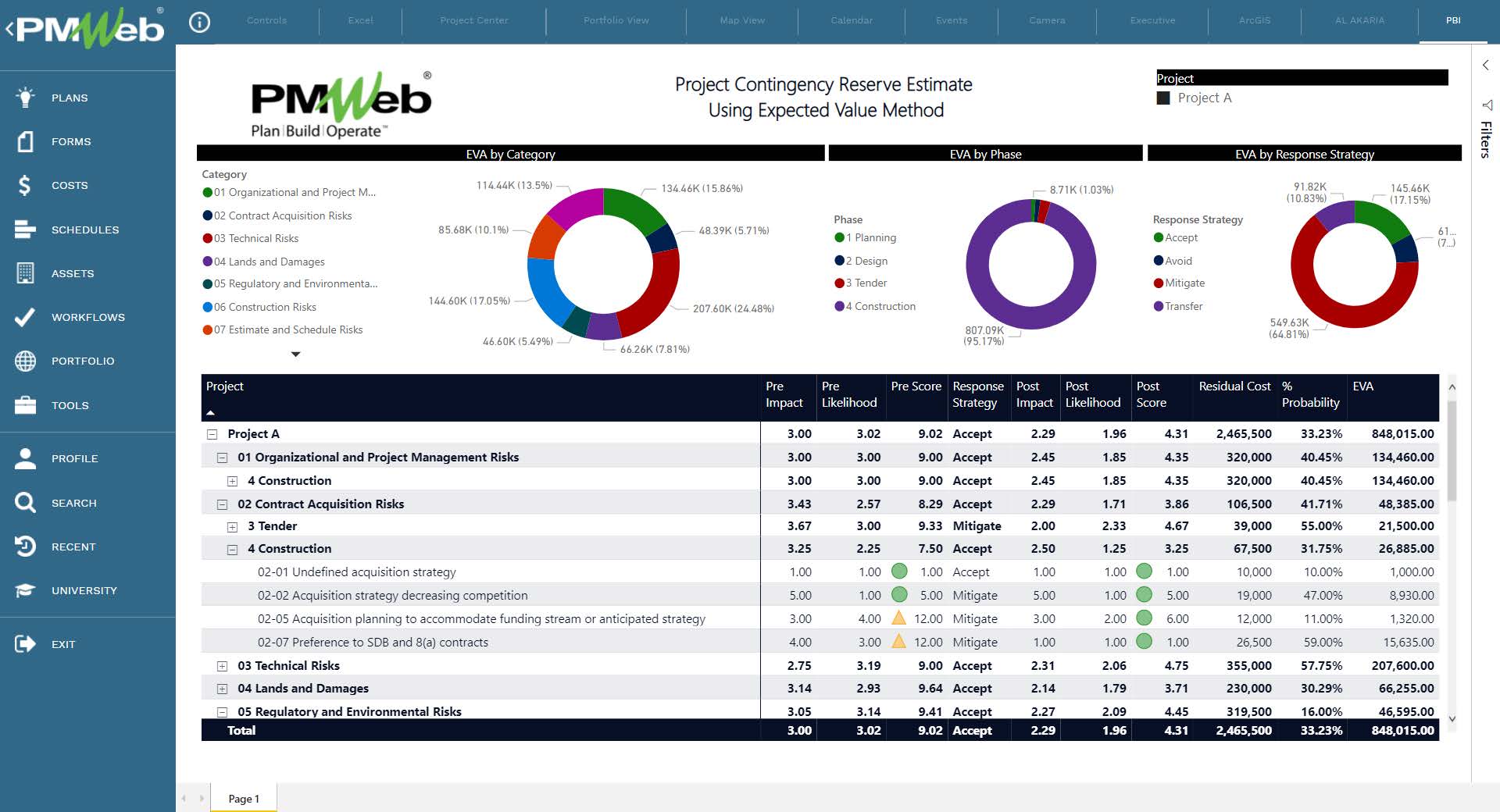
For all risk response actions for risks that were initially accepted by the risk owner, the PMWeb Budget Request module helps to capture the details of all fund transfers from the contingency reserve, or any other buffer or allowance category set to respond to accepted risks. The sum value of all those fund transfers always equals zero as the fund transfer subtracts the buffer amount to be transferred from the relevant buffer type and adds the same amount to the cost center level that needs to be adjusted. For example, assume there is a need for $50,000 from contingency to concrete works, a budget request then gets created to show a positive $50,000 for ‘03-030000 Concrete’ and a negative $50,000 for ‘05-005000 Contingency.’ Of course, all supporting documents must be attached. In addition, an assigned workflow enforces formal review and approval of each contingency transfer and incorporates the approval authority levels for those adjustments.
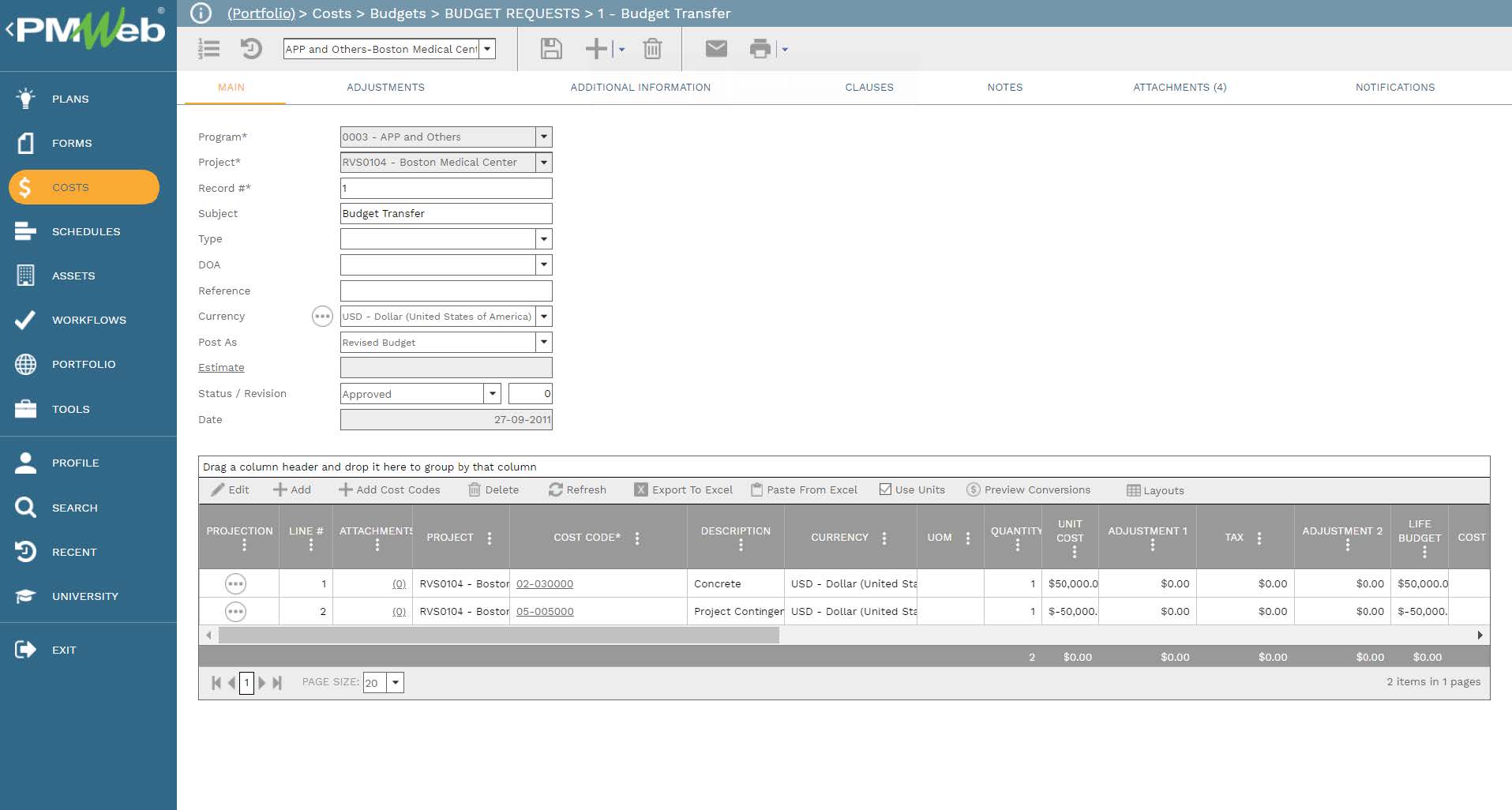
A created report captures the details of all those contingency funds or buffer transfers. The report includes a table containing details of all allowances, contingency, management reserve, and escalations transfers. The report also has five donut visuals that summarize the buffers by type. Each donut shows the amount transferred to date in red and the buffer balance amount in green along with the dollar and percent values for amounts transferred and the balance amount. In addition, each donut includes the total amount of each buffer type. The report also includes a filter to enable viewing the buffer status data for a single PPP project, program, project portfolio, or all projects.
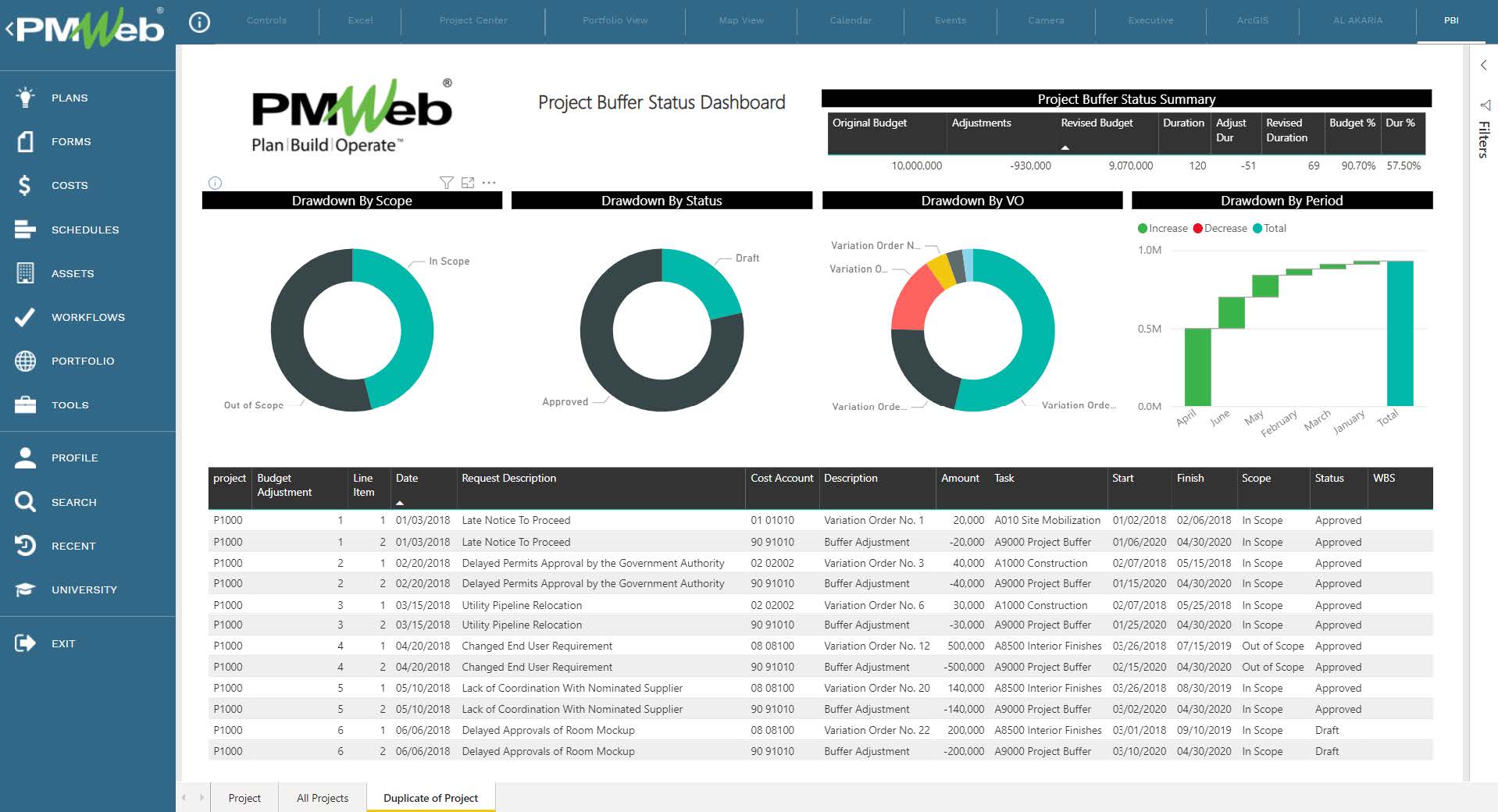
Unlike project risk, which is the possibility of a problem that has not yet occurred but, if it does occur, could hurt a project budget, schedule, or scope of work (SoW), a project issue is a problem that is currently occurring. An issue must be resolved as soon as possible. If it is not resolved, it will have detrimental effects on the project budget, schedule, and scope.
To succeed in managing, monitoring, and reporting issues raised, a real-time web-enabled solution is needed to empower those involved in managing capital project delivery. They need to raise issues as soon as they occur and ensure they are resolved without affecting the project’s objectives.
Using a PIMS like PMWeb, a new process for managing, monitoring, and reporting project issues will be created. The PMWeb custom form builder allows the organization to create the ‘Issue Resolution’ form in the desired format to capture all needed details. These details could include the issue type, category, criticality, issue description, an issue raised by an owner, issue resolution date, and which project schedule activity it impacts first. The issue form also includes fields for issue impact and severity and automatically calculates issue severity. The form also includes fields for issue resolution actions and a description of the attached documents. The form should generally be detailed to the level that eliminates ambiguities and miscommunication of the reported project issue.
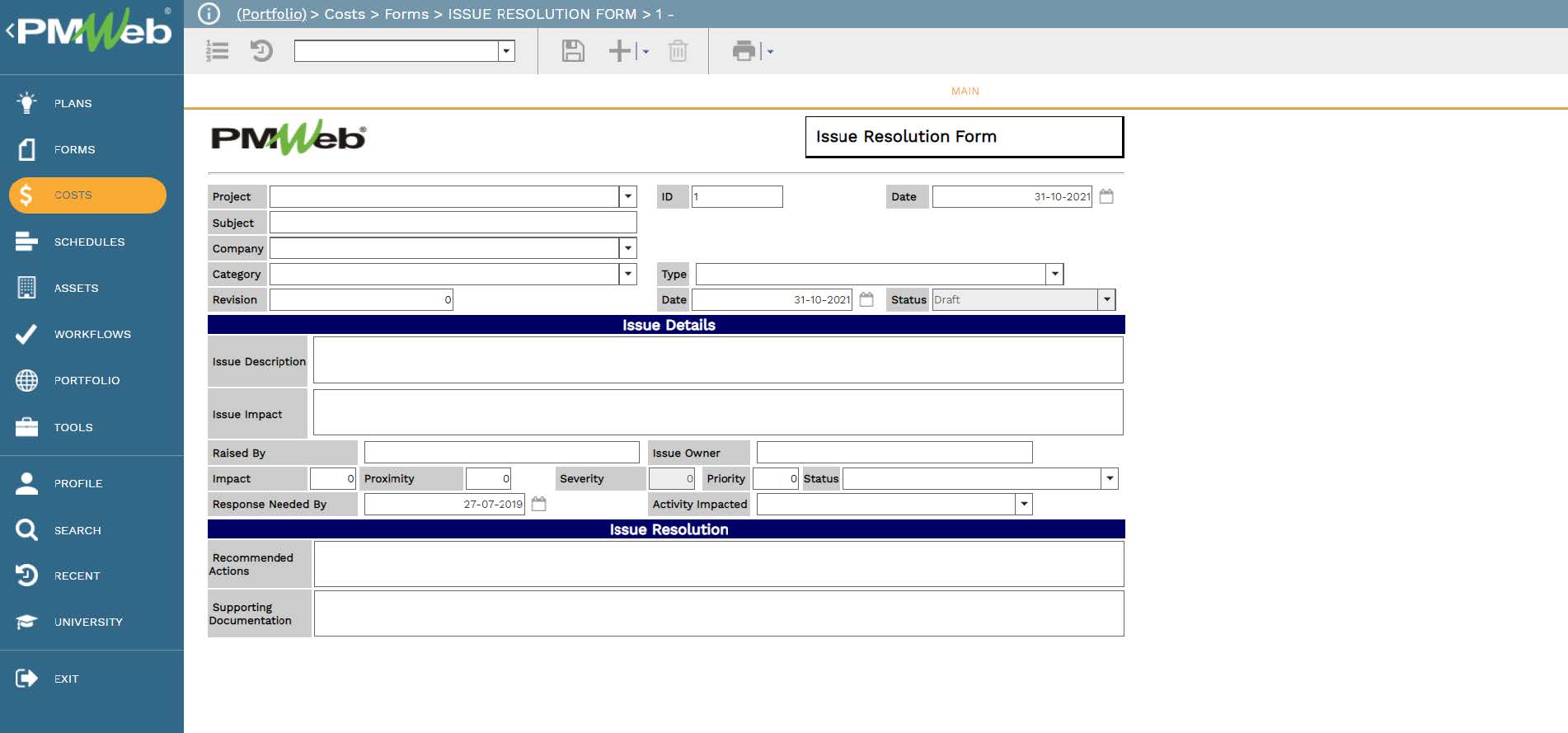
The Issues Log provides the real-time status of all project issues captured in this Issues form. The log, which may be designed in any desired form and format, could also include visuals to summarize issues by status, type, and issue owner, among others. The report’s tabular section includes the complete details of these issues that can be grouped and filtered in any desired format. Usually, senior organization executives and the project team members need the Issue Report.
